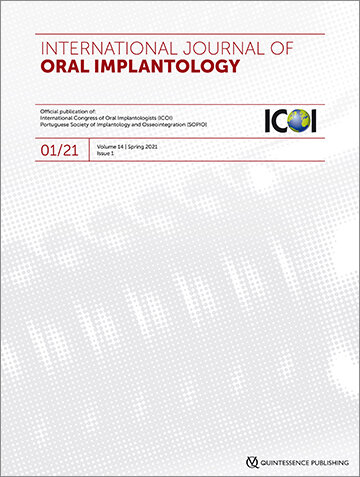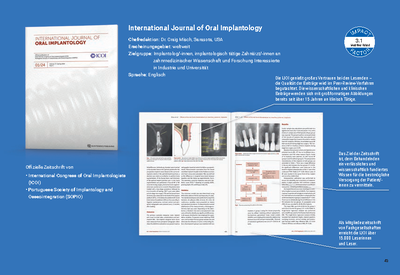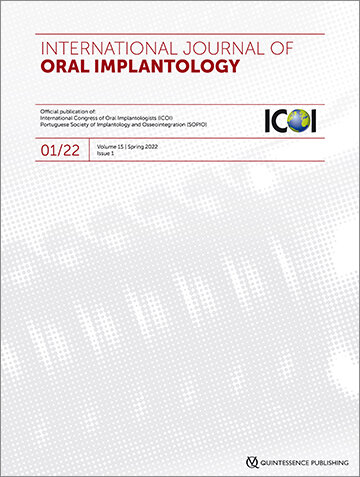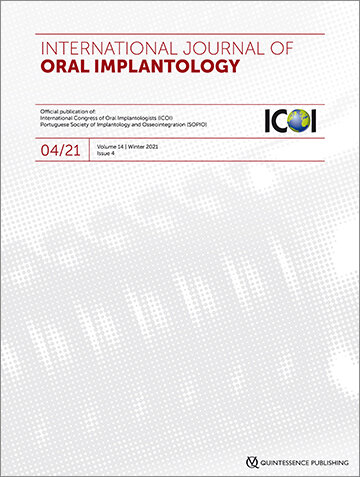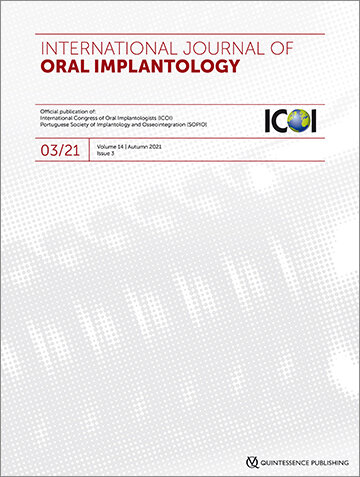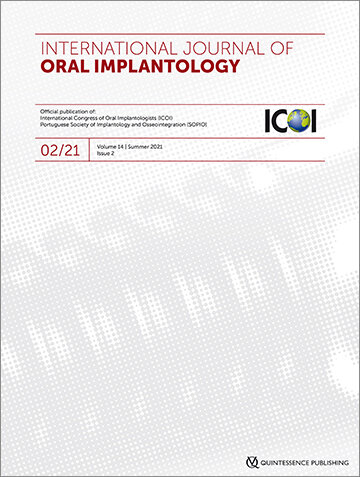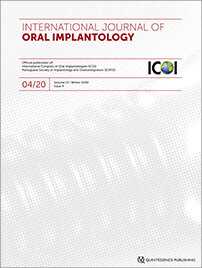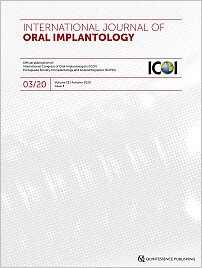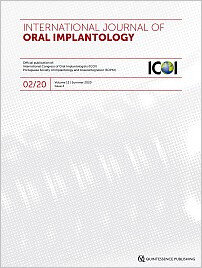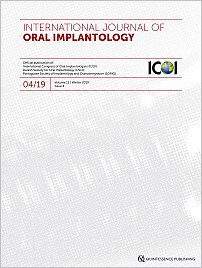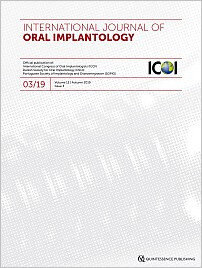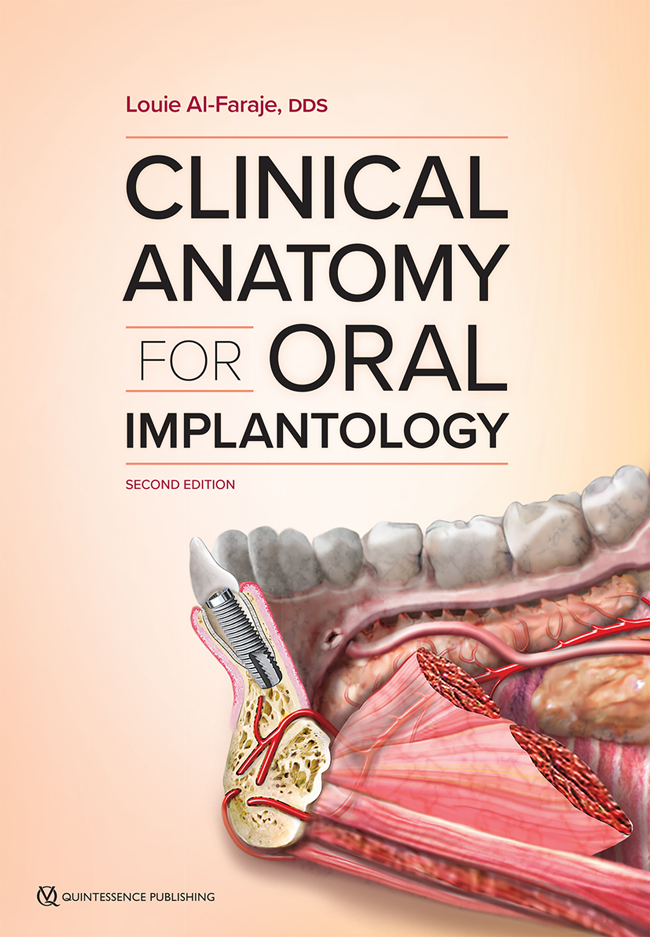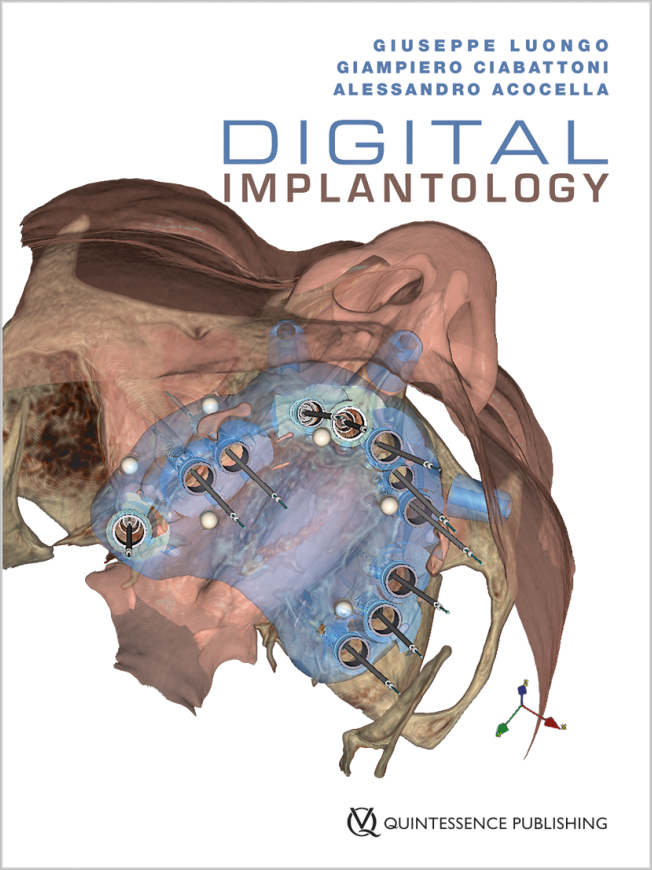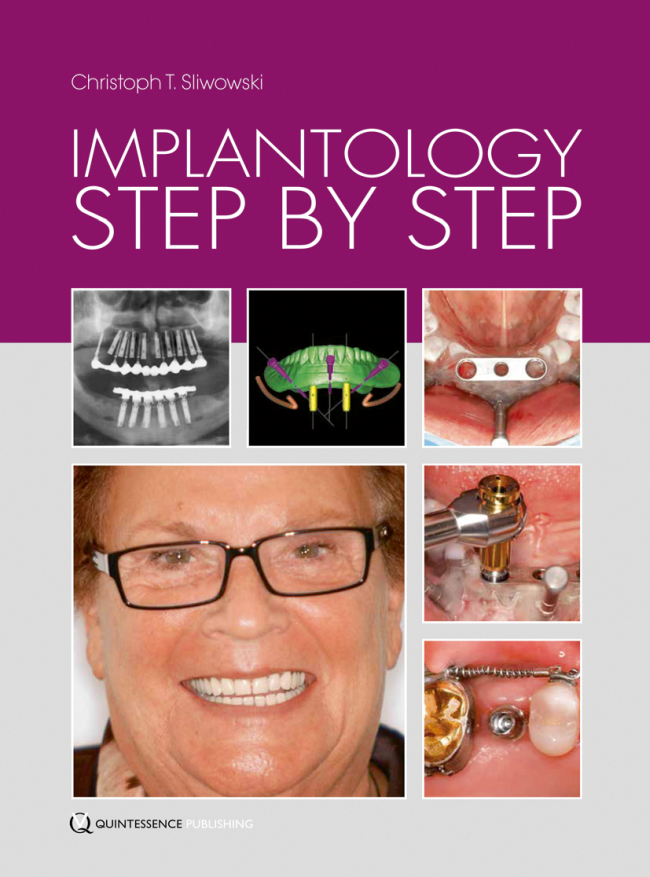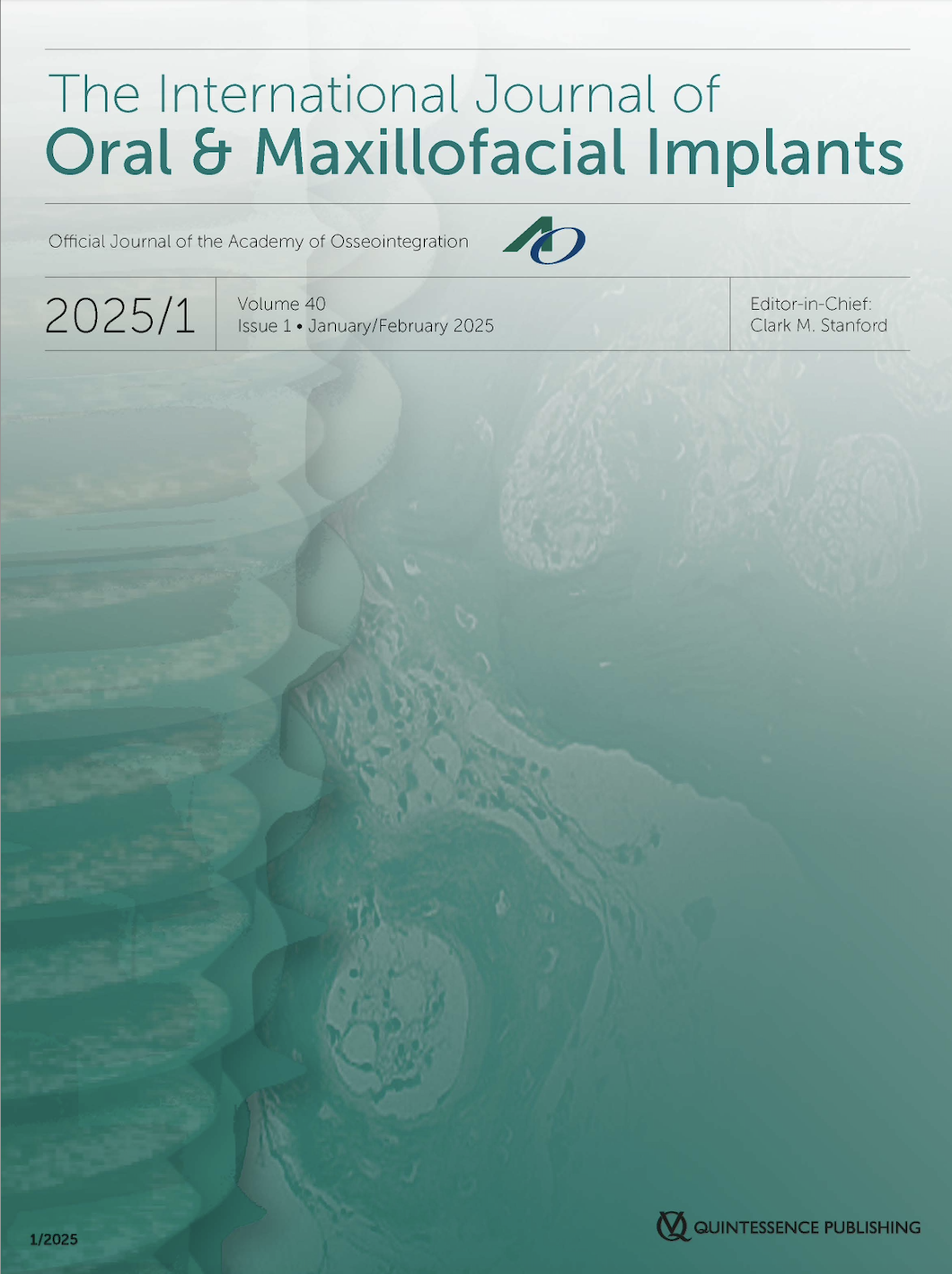ID de PubMed (PMID): 35266664Páginas 3-4, Idioma: InglésMisch, Craig M.EditorialID de PubMed (PMID): 35266665Páginas 11-33, Idioma: InglésValente, Nicola Alberto / Marchio, Vincenzo / Troiano, Giuseppe / Gasparro, Roberta / Balice, Pierluigi / Marenzi, Gaetano / Laino, Luigi / Sammartino, Gilberto / Iezzi, Giovanna / Barone, AntonioPurpose: The present systematic review and meta-analysis aimed to investigate the available evidence in the literature to answer the following focused question: In partially edentulous arches with reduced bone width, do implants placed after horizontal bone augmentation exhibit differences in survival and success rate compared to narrow-diameter implants placed in native bone?
Materials and methods: A population, intervention, comparison and outcome question was defined and an electronic search was conducted using the MEDLINE (via PubMed) and Cochrane Oral Health Group databases to identify all studies analysing the use of standard-diameter implants inserted in regenerated bone or narrow-diameter implants for the rehabilitation of partially or completely edentulous atrophic maxillae and mandibles. Inclusion criteria and quality assessments were established, and studies were selected on this basis.
Results: Twenty-four studies met the inclusion criteria and were analysed cumulatively. A comparative meta-analysis was not possible due to the lack of studies directly comparing the two rehabilitation methods in question. A cumulative implant survival rate of 97.80% (1246/1274; pooled proportion 0.984, 95% confidence interval 0.977–0.991) was reported for the narrow implants placed in atrophic ridges, while similar results were obtained for the standard-diameter implants placed in regenerated bone, with a cumulative implant survival rate of 97.94% (1332/1360; pooled proportion 0.983, 95% confidence interval 0.976–0.990).
Conclusions: The present systematic review found high and comparable survival rates between narrow- and standard-diameter implants placed in regenerated bone; however, well-designed randomised controlled trials are required to support the hypothesis that both treatment strategies are successful in comparable circumstances.
Palabras clave: horizontal bone augmentation, narrow-diameter implants, review (systematic)
Conflict-of-interest statement: The authors declare no conflicts of interest relating to this study. No funds were received for the realisation of this work.
ID de PubMed (PMID): 35266666Páginas 31-41, Idioma: InglésClauser, Tommaso / Lin, Guo-Hao / Lee, Eric / Del Fabbro, Massimo / Wang, Hom-Lay / Testori, TizianoPurpose: To assess whether bone grafting is associated with early implant failure (defined as a lack of osseointegration detected prior to functional loading) and to evaluate the association between bone grafting procedures and other risk factors for early implant failure.
Materials and methods: Two independent reviewers conducted an electronic search of MEDLINE (via PubMed). Meta-analysis was performed for the odds ratio of bone grafting procedures associated with early implant failure. The Newcastle-Ottawa Scale for cohort studies was used to assess the risk of bias.
Results: Of the 231 articles selected for full-text review, 10 were included in the qualitative analysis and for quantitative meta-analysis. An odds ratio of 1.50 (95% confidence interval 1.06–2.13) was recorded for bone grafting procedures associated with early implant failure. Data regarding the association of bone grafting and other risk factors in determining early implant failure were insufficient for quantitative analysis.
Conclusions: Within the limitations of this study, a significant positive association was found between bone grafting procedures and early implant failure. The possible negative effect of bone grafting procedures on implant osseointegration should be considered when planning implant therapy.
Palabras clave: alveolar bone grafting, dental implants, early implant failure, meta-analysis, systematic review
Conflict-of-interest statement: The authors declare there are no conflicts of interest relating to this study.
ID de PubMed (PMID): 35266667Páginas 42, Idioma: InglésID de PubMed (PMID): 35266668Páginas 45-55, Idioma: InglésGao, Bo / Lai, XiuXiu / Dong, Yan / Li, XiaoJingPurpose: To systematically review and analyse the efficacy of the socket shield technique in conjunction with immediate implant placement in the aesthetic zone in randomised controlled trials.
Materials and methods: The PubMed, Web of Science, Embase and Cochrane databases were searched from 1 January 2010 to 31 December 2020. All randomised controlled trials reporting on immediate implantation with the socket shield technique in the aesthetic zone, with at least 15 patients and a 6-month follow-up, were included and analysed. A meta-analysis was then performed using both fixed and random effects models to evaluate the differences in buccal plate height, buccal plate width and pink aesthetic score between immediate implant placement with the socket shield technique and the conventional immediate implant placement technique.
Results: Four randomised controlled trials were included and underwent quantitative analysis in the present systematic review and meta-analysis. When compared with the conventional immediate implantation group, the buccal plate height and buccal plate width for the socket shield technique group were statistically significant, with an overall increase of 0.57 mm (95% confidence interval −0.73 to −0.40) and 0.21 mm (95% confidence interval −0.26 to −0.16), respectively, at 6 months. Moreover, the pink aesthetic score for the socket shield technique group improved significantly by 1.59 points (95% confidence interval 0.05 to 3.15) at 6 months, and also demonstrated a statistically significant increase of 1.39 points (95% confidence interval 0.32 to 2.46) compared to the control group at the medium-term follow-up (12 to 36 months).
Conclusions: The present findings suggest that the socket shield technique has the potential to maintain buccal tissue contours and peri-implant tissue stability, improving functional and aesthetic outcomes in the aesthetic zone compared with the conventional immediate implant placement technique.
Palabras clave: aesthetic zone, immediate implant placement, randomised controlled trial, socket shield technique
Conflict-of-interest statement: The authors declare no conflicts of interest relating to this study. No funding was received for this review.
ID de PubMed (PMID): 35266669Páginas 57-67, Idioma: InglésLazzari, Thiago Rodrigues / Jardini, Maria Aparecida Neves / Castro dos Santos, Nidia / da Silva Neves, Felipe Lucas / da Silva Lima, Victória Clara / de Melo Filho, Antonio Braulino / Santamaria, Mauro PedrinePurpose: To evaluate the influence of connective tissue graft on the soft tissue thickness and aesthetics around single implants placed in the aesthetic zone of the maxilla.
Materials and methods: Forty-two patients with indications for single implant placement in the aesthetic zone were randomly allocated into two groups: the implant group (implant insertion) and the implant + connective tissue graft group (implant insertion and placement of a 1.50-mm-thick connective tissue graft). Clinical evaluations were performed at baseline, 4 months after surgery (prior to prosthetic reconstruction) and 1 year after crown placement to assess tissue thickness at the crestal aspect and the buccal aspect, buccal defects, keratinised tissue width and proximal bone resorption. Aesthetics were assessed using the pink aesthetic score index, and postoperative discomfort and pain tests were also performed.
Results: Only the implant + connective tissue graft group presented a significant increase in tissue thickness at the buccal aspect, with 2.36 ± 0.94 mm at baseline, 3.35 ± 1.00 mm after 4 months and 3.23 ± 0.77 mm after 1 year (P < 0.05), whereas no change was observed in the implant group. The difference between the two groups was significant after 4 months and 1 year (P < 0.05). The implant + connective tissue graft group also showed a greater reduction in buccal defects after 1 year compared to the implant group (∆ −0.50 ± 0.70 mm and ∆ −1.80 ± 1.30 mm, respectively; P < 0.05). After 1 year, a significant intergroup difference in proximal bone resorption was observed, with the implant + connective tissue graft group showing less bone resorption compared to the implant group (0.75 ± 0.20 mm and 0.92 ± 0.30 mm, respectively; P < 0.05).
Conclusions: Placement of a connective tissue graft simultaneous to single implant insertion in the anterior maxillary region can increase the thickness of the peri-implant mucosa and reduce proximal bone resorption.
Palabras clave: connective tissue, dental aesthetics, dental implants, gingival recession, soft tissue grafting
Conflict-of-interest statement: The authors declare there are no conflicts of interest relating to this study.
ID de PubMed (PMID): 35266670Páginas 71-86, Idioma: InglésSeijas Naya, Flavio / García García, Abel / Galindo-Moreno, Pablo / Gude Sampedro, Francisco / Reboiras López, Dolores / Rodríguez Zorrilla, Samuel / Gándara Vila, Pilar / Chamorro Petronacci, Cintia M / Otero Rey, Eva / Somoza Martin, José M / Blanco Carrión, Andrés / Pérez Sayáns, MarioPurpose: To evaluate marginal bone loss 6 and 12 months after prosthetic loading of implants with Dynamic Bone Management (Straumann, Basel, Switzerland) through the implementation of different drilling protocols.
Materials and methods: A balanced, randomised, single-blind clinical trial was conducted with four parallel experimental arms: immediate loading and under-drilling, immediate loading and complete drilling, early loading and under-drilling, and early loading and complete drilling. Forty-four implants with a Dynamic Bone Management design and with a diameter of 3.75 mm and a length of 10.00 mm were placed in healed mature bone (more than 6 months post-extraction).
Results: The mean primary stability achieved was 60.6 ± 12.2 implant stability quotient, with a range from 21 to 75, and no differences were observed when considering the drilling protocol used, bone type or location. Early loading resulted in a loss of 0.728 mm (standard error 0.212; 95% confidence interval 1.134 to −0.325; t value −3.440), whereas immediate loading did not result in any bone loss. When the interaction between the loading and drilling protocols was studied, performing the complete drilling protocol in conjunction with early implant loading was found to result in lower marginal bone loss, with a marginal bone gain effect of 0.814 mm (standard error 0.283; 95% confidence interval −0.274 to 1.353; t value 2.880).
Conclusions: Use of the complete drilling protocol in conjunction with early implant loading resulted in the lowest marginal bone loss at 12 months.
Palabras clave: drilling protocols, early loading, immediate loading, marginal bone loss
Conflict-of-interest statement: The authors declare there are no conflicts of interest relating to this study.





